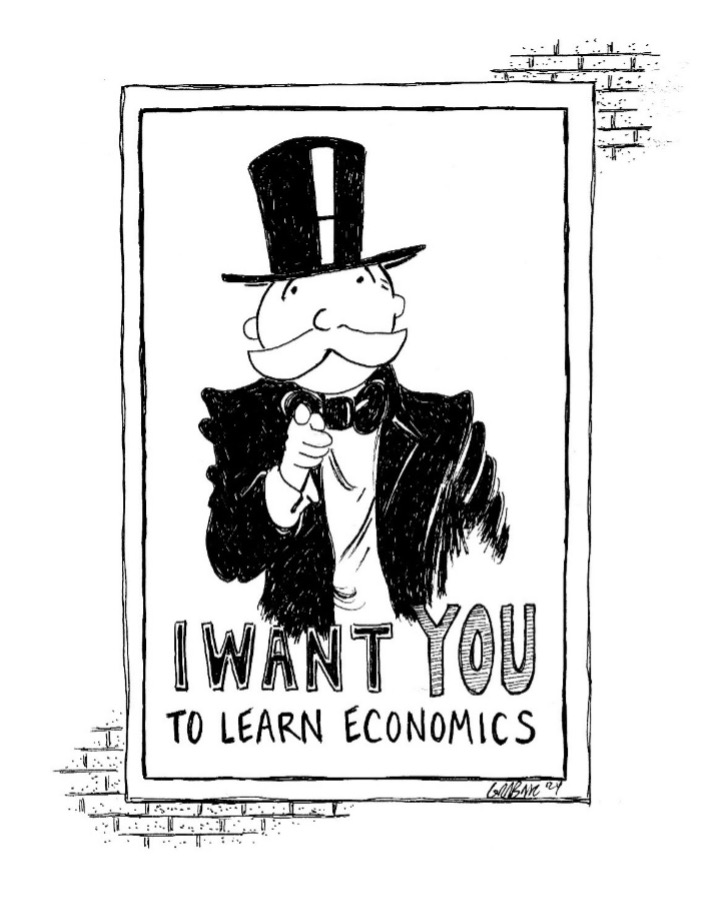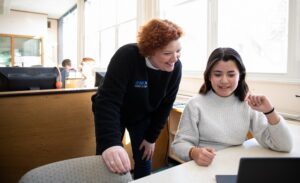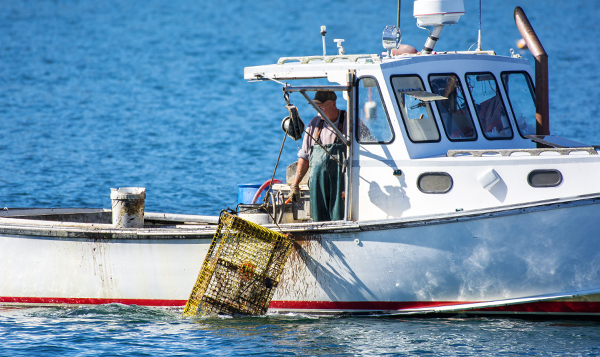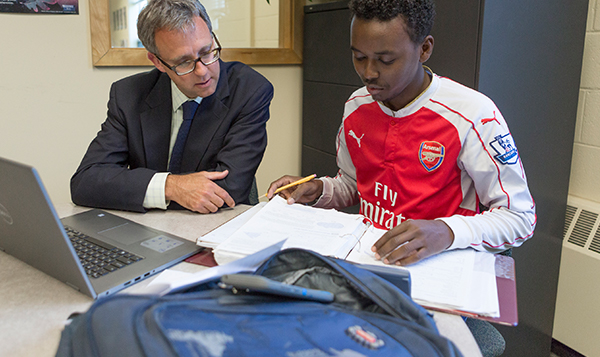Economics and Personal Finance – A Love Story, Part Two

Last time I outlined my experience learning and then learning to love economics. Now it’s time for detail and ideas for economics-related discussions in personal finance classes.
Maybe Starting by…
Refreshing yourself on or learning anew these core principals and passing them on to your students and community (another mention here of FAME’s YouTube channel and the webinar I did last fall on the economics-personal finance connection).
I offer each of these along with teaching nuggets and/or “Steveisms” in italics.
This also seems like a good time to mention that as part of my work at FAME, I visit classrooms and organizations (in-person and/or virtually), and I’d love to talk about visiting yours to talk economics and/or personal finance. Email me!
Trade-off and Opportunity Cost: A foundation of economic thought and really the cornerstone of personal finance. Every decision is a choice; every choice has a cost. Accept the cost or make a different decision. Opportunity costs are often not measurable in dollars but still have financial implications, the great example being the cost(s) of our time.
“Who bought something today? You made a trade-off. What was the opportunity cost? What were the non-financial opportunity costs? Who chose to come to school rather than sleep in? What are the costs of education? What are the opportunity costs of not having an education?”
Scarcity: It means that, simply put, there isn’t enough of anything, and that forces us into decisions or trade-offs. Welcome to the basic problem of economics.
A terrific exercise for the classroom is to challenge students to think about resources that they assume are unlimited, then work through situations that prove otherwise, get into what happens to prices, etc. Grains of sand are endless, right? There could never be a shortage, right? Look at this article.
TANSTAAFL: There Ain’t No Such Thing As A Free Lunch. The key is to challenge students to identify and understand costs associated with decisions and think about, “Is free always free? Is free always a deal?” This is a daily challenge for all of us, isn’t it? When a business offers a “FREE” TV with a purchase… Come on, is that TV really FREE? Did that restaurant really give me a “FREE MEAL” or did that coupon actually cost me $50?
I always advised my students to be wary of “FREE”, typically saying something like, “Hold onto your wallet, back away slowly, eye contact optional.” The more serious message being that, once again, everything has a cost. The key is to root out that cost and decide if it’s worth it.
The Circular Flow of the Economy: I admit, this one sounds BORING, but it’s actually very interesting and is perhaps the glue of our economic system. To summarize, everything is connected. The CF (with its lovely diagram for visual learners) shows the relationships between working, earning, and spending, between spending and business vitality, and between business vitality and working, earning, and spending. It matters because it shows us how our role as consumer conflicts with our role as financially responsible citizen/family member/cog in the economic wheel.
Core discussion: Is savings is a withdrawal or an injection? Is savings good or bad for the economy? Take a look for more on injections and withdrawals connected to the CF of the economy.
Inflation and Prices: I don’t like paying $50 to fill my gas tank. However, economics (with some help from math) shows me that adjusted for inflation, a gallon of gas is hovering right around the cheapest it’s ever been. Economics, and the perspective it provides, reminds me that it’s not a politician or an evil oil company causing me pain when I fill my tank. I’ll use my energy to focus on expenses I can control, on larger environmental concerns, or on the costs (and opportunity costs) of converting to the next major source of energy.
Have some fun with the class and explore prices as they compare to the “Good Old Days” with this inflation calculator. For example, 40 years ago a gallon of gas cost $1.21. Adjusted for standard inflation it should cost $3.65/gallon today. The average price/gallon in the US now according to AAA? $3.60. Wow. The overwhelming political/message is that gas is outrageously expensive and it’s <insert name>’s fault. Gas prices are in line with inflation. What’s not? A pound of ground beef cost $1.30 in 1984. Adjusted for inflation it should cost around $3.92 today, but no, it does not. The average price/pound in the US is around $5.20. Where’s the society-wide, media fueled and politically charged cry for change?!?
Politics and Economics: Economics is my filter. It helps me decide if a policy is good or bad for me or for my community. It can be hard to distinguish between economics and politics but remember this – economics doesn’t benefit from being elected; it is what it is, an honest and objective analytical tool.
Have the class look at almost any political ad from any era, ask the students to identify the economic concepts and discuss whether the message of the ad is rooted in economic truth or political persuasion.
Honorable Mentions:
- The Federal Reserve, monetary policy, interest rates, and they affect consumers.
- The Paradox of Thrift (I predict that there will be a post dedicated to this gem).
- The theory of wage-price spiral and inflation in general.
Quick Quiz
Economics:
A) is a great tool for supporting our personal financial decisions.
B) is a great tool for understanding political conversations.
C) doesn’t have to be boring – you can make it sizzle.
Yep, all of the above.
About the Author:
Steve has worked on financial literacy efforts in Maine since 2004, and in July 2023 he started at FAME as a Financial Education Programs Specialist. He has a B.S. in economics from Southern Connecticut State University, an MBA from the University of Hartford, and he has served as a U.S. Peace Corps Volunteer.
In the fall of 2003, he started a 20-year connection to the Waynflete School in Portland, where he taught math and personal finance, advised middle and upper school students, and coached baseball. Steve worked with students to create the Finance Club and an award-winning LifeSmarts team (Nationals 2013, 2014, and 2015). In 2011, Steve coached a Waynflete team to victory in the Boston Federal Reserve Economics Cup Challenge.
Steve was named Maine Jump$tart Financial Educator of the Year for 2012, was the keynote speaker at the Maine Jump$tart Annual Teacher Conferences in 2015 and 2023, and was Maine Jump$tart’s training coordinator from 2017 to 2023.
Steve and his family moved to Seville, Spain in July 2016 where he taught English and business English and learned many new personal finance lessons. He now lives in Portland with his wife and their son.





